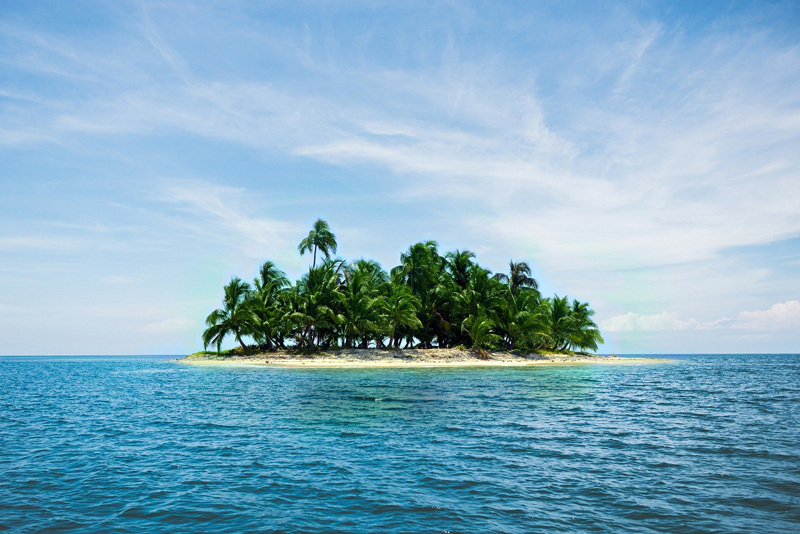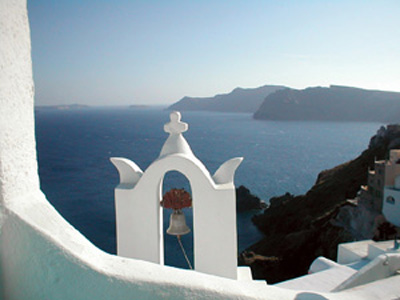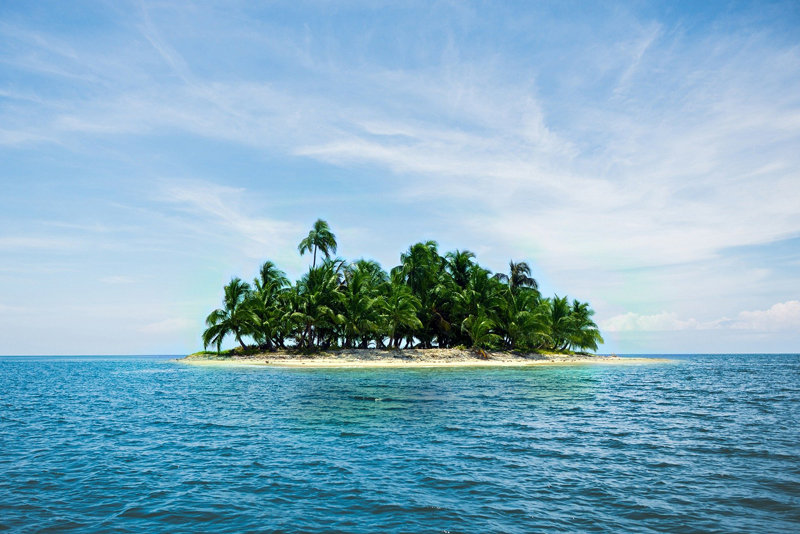Santorini - Greek Beauty in the Aegean

Glistening white walls contrasting with bright blue doors and roofs on small cubicle houses, precariously perched on top of massive cliffs overlooking the spectacularly deep blue waters of the Aegean Sea. Does this image sound familiar? Then most likely you’ve seen pictures of the island of Santorini. Not surprising since it is very prominently featured on most Greek travel promotion sites. And thousands of tourists post pictures of Santorini on line because it’s almost impossible to take a “bad” picture there. Yes, it truly is as breathtakingly beautiful as it looks in all of those pictures!
 I have met many people who have been to Santorini, and most, like my daughter and myself, fantasize about one day living there. It has a way of capturing your heart in a very short period of time.
I have met many people who have been to Santorini, and most, like my daughter and myself, fantasize about one day living there. It has a way of capturing your heart in a very short period of time.
So what is it that makes this particular Greek island so spectacular? A large part of the beauty is due to its volcanic origins. The lagoon where all of the cruise ships drop anchor is actually part of a caldera, with the walls of the ancient volcanic crater rising dramatically on three sides up to 300 m. The top was blown away in a massive eruption in the mid second millennium BCE – an event that destroyed the Minoan settlement of Akrotiri on the island and had far-reaching impacts around the globe.
This volcanic history created the spectacular cliff faces, upon which the islanders have built the traditional Cycladic buildings as homes, shops and “tavernas”. With almost all of them perched on cliff faces facing westward over the sea and further islands, you can imagine where you want to be as the sun begins to set…
But there is even more that the volcanic history has given to the island. On the non-caldera side of the island are gently sloping beaches – with varying shades of sand. The most unique is the “Red Beach” with distinctly red sand backed by slabs of red and black volcanic rock; and if you look along the rocks you will see them gradually turn white – which leads to the “White Beach” – not your usual whitish sand color, but almost chalky looking white cliffs. In contrast, further along the coast is the “Black Beach” near the villages of Perissa and Kamari where the darker volcanic sand keeps the water warmer.
Another volcanic legacy to the island is the archeological site at Akrotiri, where they have unearthed from under the solidified ash nearly one-third of the ancient settlement that was one of the Aegean’s major Bronze Age ports. An unfortunate roof collapse at the site a few years ago caused its closing to the public, but once they open it again, it’s a highly recommended day trip. In the meantime, you can view many of the relics and art excavated from Akrotiri in the Museum of Prehistoric Art in the village of Fira.
And what would a volcanic island be without hot springs? You can swim through the hot springs and take mud baths on the small island of Palia Kameni that has grown up through volcanic deposits in the middle of the caldera since the time of the ancient massive eruption.
The volcanic ash soil and unique dry climate of Santorini have also given rise to delectable treats for foodies and wine enthusiasts. Especially renowned are the cherry tomatoes that are unbelievably sweet and flavorful, the sweet white eggplants that are often eaten raw like a fruit, and the unique local giant cucumbers that turn yellow and taste like melon. An island dish that you shouldn’t miss are the “keftedes” – deep-fried tomato balls. And there’s the small but vibrant wine industry on the island. The best-known production is “Vinsanto”, a strong sweet dessert wine made from the indigenous Assyrtiko variety of grapes.
So the volcanic history of Santorini has provided a plethora of unique experiences for you to enjoy – from riding a mule up the 300 m. high precipice from the port, to sailing through the caldera to take a sulfur mud bath, to bathing on a red sand beach, to watching the spectacular colors of the sunset over the Aegean from the towering cliffs while enjoying succulently sweet unique vegetables or perhaps a glass of perfect amber dessert wine. Yes, Santorini is the island of those spectacularly photographic whitewashed houses and blue roofs, but it is also so much more. So be careful not to lose your heart to the island!
Note: no promotional consideration was provided or paid for this article.
 I have met many people who have been to Santorini, and most, like my daughter and myself, fantasize about one day living there. It has a way of capturing your heart in a very short period of time.
I have met many people who have been to Santorini, and most, like my daughter and myself, fantasize about one day living there. It has a way of capturing your heart in a very short period of time.So what is it that makes this particular Greek island so spectacular? A large part of the beauty is due to its volcanic origins. The lagoon where all of the cruise ships drop anchor is actually part of a caldera, with the walls of the ancient volcanic crater rising dramatically on three sides up to 300 m. The top was blown away in a massive eruption in the mid second millennium BCE – an event that destroyed the Minoan settlement of Akrotiri on the island and had far-reaching impacts around the globe.
This volcanic history created the spectacular cliff faces, upon which the islanders have built the traditional Cycladic buildings as homes, shops and “tavernas”. With almost all of them perched on cliff faces facing westward over the sea and further islands, you can imagine where you want to be as the sun begins to set…
But there is even more that the volcanic history has given to the island. On the non-caldera side of the island are gently sloping beaches – with varying shades of sand. The most unique is the “Red Beach” with distinctly red sand backed by slabs of red and black volcanic rock; and if you look along the rocks you will see them gradually turn white – which leads to the “White Beach” – not your usual whitish sand color, but almost chalky looking white cliffs. In contrast, further along the coast is the “Black Beach” near the villages of Perissa and Kamari where the darker volcanic sand keeps the water warmer.
Another volcanic legacy to the island is the archeological site at Akrotiri, where they have unearthed from under the solidified ash nearly one-third of the ancient settlement that was one of the Aegean’s major Bronze Age ports. An unfortunate roof collapse at the site a few years ago caused its closing to the public, but once they open it again, it’s a highly recommended day trip. In the meantime, you can view many of the relics and art excavated from Akrotiri in the Museum of Prehistoric Art in the village of Fira.
And what would a volcanic island be without hot springs? You can swim through the hot springs and take mud baths on the small island of Palia Kameni that has grown up through volcanic deposits in the middle of the caldera since the time of the ancient massive eruption.
The volcanic ash soil and unique dry climate of Santorini have also given rise to delectable treats for foodies and wine enthusiasts. Especially renowned are the cherry tomatoes that are unbelievably sweet and flavorful, the sweet white eggplants that are often eaten raw like a fruit, and the unique local giant cucumbers that turn yellow and taste like melon. An island dish that you shouldn’t miss are the “keftedes” – deep-fried tomato balls. And there’s the small but vibrant wine industry on the island. The best-known production is “Vinsanto”, a strong sweet dessert wine made from the indigenous Assyrtiko variety of grapes.
So the volcanic history of Santorini has provided a plethora of unique experiences for you to enjoy – from riding a mule up the 300 m. high precipice from the port, to sailing through the caldera to take a sulfur mud bath, to bathing on a red sand beach, to watching the spectacular colors of the sunset over the Aegean from the towering cliffs while enjoying succulently sweet unique vegetables or perhaps a glass of perfect amber dessert wine. Yes, Santorini is the island of those spectacularly photographic whitewashed houses and blue roofs, but it is also so much more. So be careful not to lose your heart to the island!
Note: no promotional consideration was provided or paid for this article.

Related Articles
Editor's Picks Articles
Top Ten Articles
Previous Features
Site Map
Content copyright © 2023 by Laura Hartney. All rights reserved.
This content was written by Laura Hartney. If you wish to use this content in any manner, you need written permission. Contact Malika Bowling for details.



